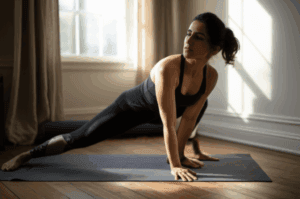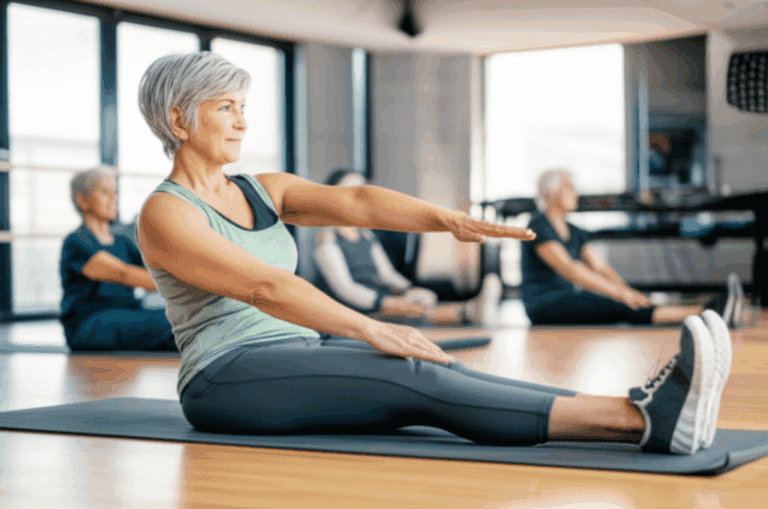As the human body ages, it undergoes various physiological changes that can impact physical performance and overall well-being. However, these changes do not necessitate a cessation of physical activity; rather, they highlight the importance of adapting exercise routines to maintain health, functional independence, and quality of life. Regular physical activity can help mitigate the effects of aging, such as reduced muscle mass and bone density, and improve cardiovascular function, balance, and cognitive health.

Physiological Changes with Aging and Their Impact on Exercise
Aging brings about several natural physiological shifts that influence how the body responds to exercise:
- Muscle Mass and Strength (Sarcopenia): After age 30, overall physical fitness generally declines, with muscle mass, force, and endurance decreasing. This loss of muscle mass, known as sarcopenia, can accelerate significantly after the age of 60. This decline impacts strength, making daily activities more challenging and increasing the risk of falls.
- Bone Density: Bone strength naturally decreases with age, making bones more susceptible to conditions like osteoporosis and increasing the risk of fractures. Weight-bearing exercises are crucial to counteract this.
- Cardiovascular Changes: The cardiovascular system undergoes modifications, including a decline in maximal heart rate and a reduction in the elasticity of arteries, which can affect oxygen uptake and transport to muscles. This can lead to decreased endurance and longer recovery times.
- Flexibility and Mobility: Joint rigidity increases, and the elasticity of joints and ligaments decreases, leading to a reduced range of motion and stiffness. This can make movements more difficult and increase injury risk.
- Balance and Coordination: Balance control declines with age, becoming a major risk factor for falls, particularly in adults over 65. Falls can have serious consequences, impacting independence.
- Recovery Time: The body’s ability to recover from exercise tends to slow down with age due to factors like reduced muscle glycogen stores and hormonal changes.
Despite these changes, research consistently shows that consistent and appropriately practiced physical exercise is highly effective in delaying or preventing many of the consequences of aging. The extent of adaptation to exercise in older individuals is comparable to that in younger people.

Adapting Your Routine for Optimal Benefits
To maximize benefits and minimize risks, it’s essential to adapt exercise routines to accommodate age-related changes. General guidelines recommend that adults 65 and older aim for at least 150 minutes of moderate-intensity aerobic activity or 75 minutes of vigorous-intensity aerobic activity per week, along with muscle-strengthening activities on at least two days a week and balance exercises.
Strength Training
Strength training is crucial for maintaining muscle mass, bone density, and functional independence.
- Focus on Functional Movements: Prioritize exercises that mimic daily activities, such as squats (can be modified to chair squats), bent-over rows, and overhead presses, to improve strength for everyday tasks like standing from a chair or lifting objects.
- Progressive Overload: To continue building strength, the intensity of the exercise must be adapted as muscles improve. Start with light weights, resistance bands, or bodyweight exercises and gradually increase the resistance or repetitions as strength improves.
- Repetition Range and Intensity: Aim for 2-3 sets of 8-12 repetitions for each major muscle group. For strength gains, an intensity of 70-85% of your one-repetition maximum (1RM) is optimal, or an RPE (Rate of Perceived Exertion) of 6-8 (“somewhat hard” to “hard”) is a good guide. For those just starting, higher rep sets (e.g., 15 repetitions) can be a good initial approach.
- Proper Form: Emphasize correct technique to prevent injuries. Seek guidance from a certified trainer or physiotherapist if unsure.
- Recovery: Allow adequate rest between strength training sessions, typically at least two days a week, to allow muscles to recover and rebuild.
Cardiovascular Exercise
Cardiovascular (aerobic) exercise strengthens the heart and lungs, improves circulation, and reduces the risk of chronic diseases.
- Moderate Intensity: Aim for activities that raise your heart rate and make you breathe faster, where you can still talk but not sing. Examples include brisk walking, swimming, water aerobics, cycling, or using a stair climber.
- Listen to Your Body: While exercise is beneficial, avoid overexertion. Older adults are more prone to muscle strain and overuse injuries. Short sessions (e.g., 10 minutes, 3 times a day) are as effective as longer ones.
- Variety: Mix up your activities to prevent overworking the same muscles and maintain engagement.
- Warm-up and Cool-down: Always include a gentle warm-up before and a cool-down after your aerobic activity.
Flexibility and Mobility
Maintaining flexibility helps improve range of motion, reduces stiffness, and can alleviate muscle pain.
- Regular Stretching: Incorporate stretching into your routine daily or most days of the week.
- Types of Stretches: Include static stretches (holding a stretch for 15-60 seconds) and dynamic movements. Examples include calf stretches, hamstring stretches, chest stretches, neck rotations, and shoulder and upper arm stretches.
- Gentle Approaches: Activities like yoga and Pilates can significantly improve flexibility and agility through gentle, low-impact movements.
Balance Training
Balance exercises are critical for reducing the risk of falls and improving overall stability.
- Why It’s Crucial: Impaired balance is a major risk factor for falls, which can lead to serious injuries.
- Examples of Exercises:
- Single-limb stance: Holding onto a stable chair, lift one foot off the floor and balance for 10-30 seconds, then switch legs.
- Heel-to-toe walking: Walk by placing the heel of one foot directly in front of the toes of the other foot, like walking a tightrope.
- Weight shifts: Shift your weight from one foot to the other while standing.
- Tai Chi or Chair Yoga: These activities combine movement, balance, and relaxation.
- Progression: As balance improves, gradually increase the difficulty by reducing support (e.g., holding with one finger, then no hands), closing eyes (if safe), or adding head movements or cognitive tasks.

Key Principles for Age-Appropriate Exercise
- Consult Your Doctor: Before starting any new exercise program, especially if you have chronic conditions, consult with your healthcare provider. They can help create a plan that matches your abilities and addresses any specific health concerns.
- Start Slowly and Progress Gradually: Begin with gentle exercises and gradually increase intensity, duration, and frequency as your strength and confidence improve. Rushing can lead to injury.
- Listen to Your Body: Pay attention to signals of pain, dizziness, or shortness of breath. It’s important to differentiate between muscle soreness and pain, and to stop if something feels wrong.
- Stay Hydrated: Drink plenty of water before, during, and after exercise, as the sense of thirst can diminish with age.
- Proper Nutrition: Support your active lifestyle with a balanced diet rich in fruits, vegetables, whole grains, and lean proteins to maintain muscle mass and bone health. Ensure adequate intake of calcium and Vitamin D.
- Use Supportive Equipment: Don’t hesitate to use chairs, handrails, or assistive devices for stability, especially when working on balance or if you have mobility issues.
- Injury Prevention: Regular exercise tailored to your abilities helps prevent injuries by improving strength, balance, and flexibility. Review medications with your doctor regularly, as some can increase fall risk.
- Make It Enjoyable: Choose activities you genuinely enjoy, and consider exercising with friends or in group settings for added motivation and social engagement.
By embracing a proactive and adaptable approach to physical activity, older adults can continue to reap the profound benefits of exercise, maintaining vitality, independence, and a high quality of life for many years to come.




